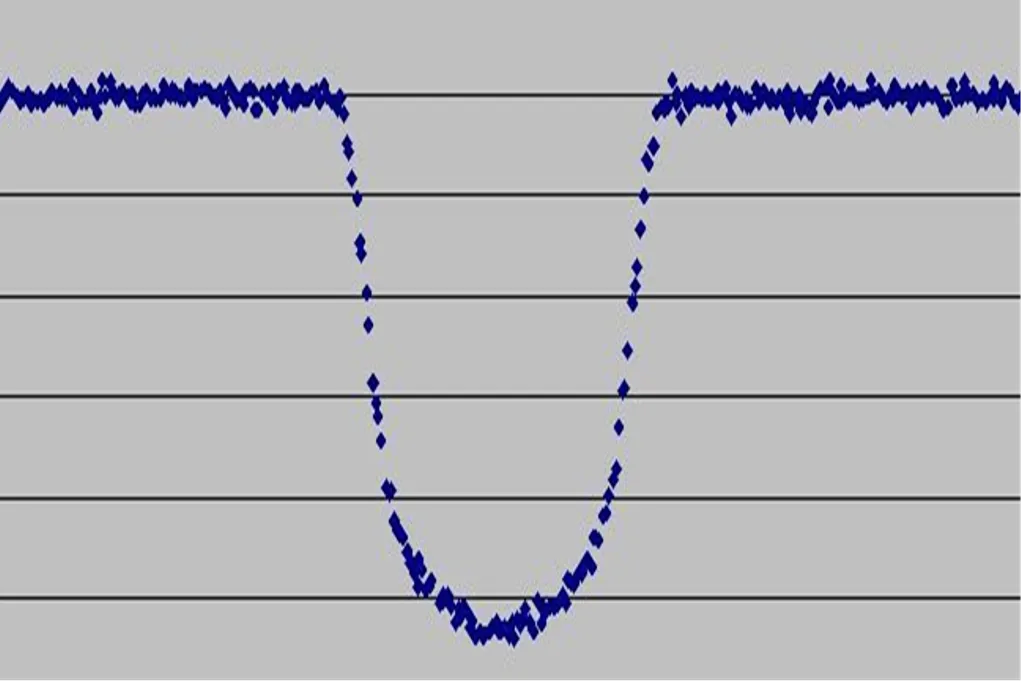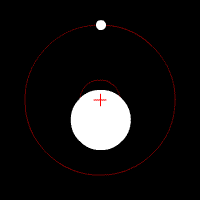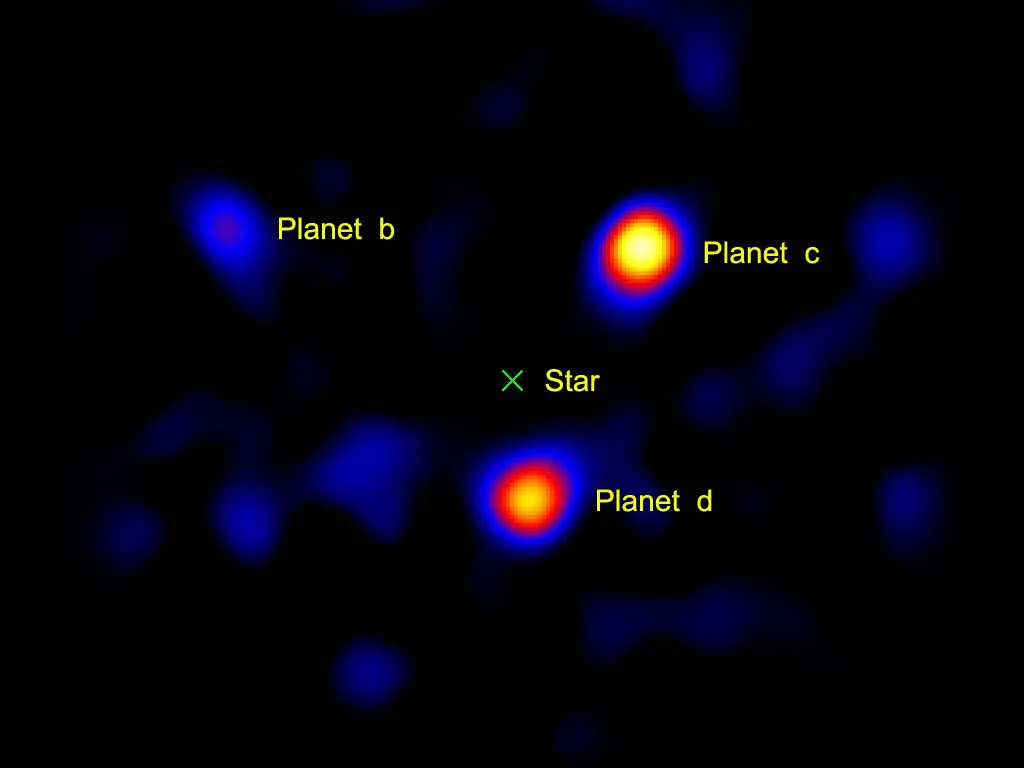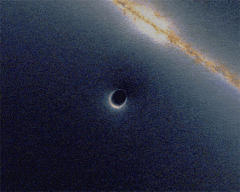How Do Astronomers Actually Find Exoplanets?
A handful of ingenious methods have been used to detect the planets too far away for us to see
/https://tf-cmsv2-smithsonianmag-media.s3.amazonaws.com/filer/f8/09/f809e68e-ba58-4e76-8ad5-f21a220d9adb/kepler34-e1391231694437.jpg)
A generation ago, the idea of a planet orbiting a distant star was still in the realm of science fiction. But since the discovery of the first exoplanet in 1988, we've found hundreds of them, with the discoveries coming at a faster rate over time.
Last month, in a single announcement, NASA astronomers revealed the discovery of 715 previously unknown planets in data collected by the Kepler Space Telescope, bringing the total number of known exoplanets to 1771. Within this are all sorts of exoplanets: some that orbit two stars, some that are full of water, some that are roughly Earth-sized and some that are more than twice as big as Jupiter.
But the vast majority of all these distant planets have one thing in common—with a few exceptions, they're too far away for us to see, even with our most powerful telescopes. If that's the case, how do astronomers know they're there?
Over the past few decades, researchers have developed a variety of techniques to spot the many planets outside our solar system, often used in combination to confirm the initial discovery and learn more about the planet's characteristics. Here's an explanation of the main methods used so far.
Transit
Imagine looking at a small planet orbiting a star far, far away. Occasionally, the planet might pass in between you and its star, briefly blocking some of the starlight. If this dimming happened with enough frequency, you might be able to infer the presence of the planet, even if you can't see it.

This, is essence, is the transit method of detecting exoplanets, responsible for the majority of our exoplanet discoveries so far. Of course, for distant stars, there's no way the naked human eye would be able to reliably detect a dimming in the amount of light we see, so scientists rely on telescopes (notably, the Kepler space telescope) and other instruments to collect and analyze this data.
Thus, for an astronomer, "seeing" a distant exoplanet via the transit method generally ends up looking something like this:

In some cases, the amount of dimming caused by the planet passing in between its star and us can also tell astronomers a rough estimate of the planet's size. If we know the size of a star and the planet's distance from it (the latter determined by another detection method, radial velocity, lower down on this list), and we observe that the planet blocks a certain percentage of the star's light, we can calculate the planet's radius based solely on these values.
There are, however, disadvantages to the transit method. A planet has to be lined up correctly to pass in between us and its star, and the farther out it orbits, the lower the chance of this alignment. Calculations indicate that for an Earth-sized planet oribiting its star at the same distance we orbit ours (about 93 million miles), there's just a 0.47 percent chance that it'd be aligned properly to cause any dimming.
The method can also lead to a high number of false positives—episodes of dimming that we identify as transiting planets but are ultimately caused by something else entirely. One study found that as much as 35 percent of the large, closely orbiting planets identified in Kepler data could in fact be nonexistent, and the dimming attributed to dust or other substances situated between us and the star. In most cases, astronomers attempt to confirm planets found via this method with other methods on this list.
Orbital Brightness
In some cases, a planet orbiting its star causes the amount of light reaching Earth to rise, rather than dip. Generally, these are cases in which the planet orbits very closely in, so that it's heated to the degree that it emits detectable amounts of thermal radiation.
Although we're not able to distinguish this radiation from that of the star itself, a planet that's orbiting in the right alignment will be exposed to us in a regular sequence of stages (similar to the phases of the moon), so regular, periodic rises in the amount of light that space telescopes receive from these stars can be used to infer the presence of a planet.
Similar to the transit method, it's easier to detect large planets orbiting close to their stars with this technique. Although only a handful of planets have been discovered using solely this method so far, it may end up being the most productive method long-term, because it doesn't require an exoplanet to pass directly in between us and the star for us to detect it, opening up a much wider range of possible discoveries.
Radial Velocity
In elementary school, we're taught that a solar system is a stationary star surrounded by slowly orbiting planets, asteroids and other debris. The truth, though, is slightly more complicated: Due to the gravitational pull of the planets, the star wobbles away from the system's center of gravity ever so slightly as well:

The phenomenon goes something like this: a large planet, if it has enough mass, might be able to pull the star toward it, causing the star to move from being the exact center of the far-away solar system. So periodic, predictable yet still minute shifts in the star's position can be used to infer the presence of a large planet near that star.
Astronomers have taken advantage of this phenomenon to detect hundreds of exoplanets. Until recently, when it was surpassed by transit, this method (called radial velocity) was responsible for the majority of exoplanets discovered.
It might seem difficult to measure slight movements in stars hundreds of light years away, but it turns out that astronomers can detect when a star accelerates towards (or away from) Earth at velocities as low as one meter per second because of the Doppler effect.
The effect is the phenomenon of waves (whether sound, visible light or other forms of electromagnetic energy) appearing to be slightly higher in frequency when the object emitting them is moving towards an observer, and slightly lower when it's moving away. You've experienced firsthand if you've ever heard the high whine of an approaching ambulance's siren replaced with a slightly lower tone as it drives away.
Replace the ambulance with a distant star and the sound of a siren with the light it emits, and you've pretty much got the idea. Using spectrometers, which measure the particular frequencies of light emitted by a star, astronomers can search for apparent shifts, indicating that the star is moving slightly closer to us or drifting slightly away.
The degree of movement can even reflect the mass of the planet. When combined with the planet's radius (calculated via the transit method), this can allow scientists to determine the planet's density, and thus its composition (if it's a gas giant or a rocky planet, for instance).
This method is also subject to limitations: it's much easier to find a bigger planet orbiting a smaller star, because such a planet has a higher impact on the star's movement. Relatively small, Earth-sized planets would likely be hard to detect, especially at far distances.
Direct Imaging
In a few rare cases, astronomers have been able to find exoplanets in the simplest way possible: by seeing them.

These cases are so rare for a few reasons. To be able to distinguish a planet from its star, it needs to be relatively far away from it (it's easy to imagine that Mercury, for instance, would be indistinguishable from the Sun from far away). But if a planet is too far from its star, it won't reflect enough of the star's light to be visible at all.
Exoplanets that can most reliably be seen by telescopes are large (like Jupiter) and very hot, so that they give off their own infrared radiation, which can be detected by telescopes and used to distinguish them from their stars. Planets that orbit brown dwarfs (objects that aren't technically classified as stars, because they're not hot or massive enough to generate fusion reactions, and thus give off little light) can also be detected more easily.
Direct imaging has also been used to detect a few particularly massive rogue planets—those that float freely through space, instead of orbiting a star.
Gravitational lensing
All the previous methods on this list make some sense to a non-scientist at some intuitive level. Gravitational lensing, used to discover a handful of exoplanets, requires some more abstract thought.
Imagine one star very far away, and another star about half way between it and Earth. In rare moments, the two stars might nearly line up, almost overlapping one another in the night sky. When this happens, the force of the closer star's gravity acts like a lens, magnifying the incoming light from the distant star as it passes near it to reach us.

If a star that has a planet in near orbit serves as the gravitational lens, that planet's gravitational field can add a slight but detectable contribution to the magnification event. Thus, in some rare cases, astronomers have been able to infer the presence of distant planets by the way that they magnify the light of even more distant stars.

/https://tf-cmsv2-smithsonianmag-media.s3.amazonaws.com/accounts/headshot/joseph-stromberg-240.jpg)
/https://tf-cmsv2-smithsonianmag-media.s3.amazonaws.com/accounts/headshot/joseph-stromberg-240.jpg)